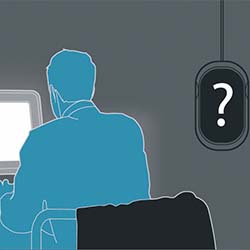These days, most companies, especially publicly-held companies with complex regulations to follow, have disaster recovery plans. These plans include instructions for data back-up, storage, and recovery as well as employee training. However, with all this talk about corporate disaster planning, do you have a PERSONAL disaster recovery plan.
For many of us, boxes fill our home closets, files stick out from our cabinets, and some may even have boxes in storage lockers. But the time has come to get a handle on our important data and plan for the worst case scenario. Think of natural disasters like Katrina and Sandy and their terrible destruction – and use them as your impetus to get started.
Grab some USB thumb drives or a packet of CD’s. Then identify your most important data. This can easily be described as information or images that you cannot live without. Add the data to your storage devices, and make them easily accessible in case you need to leave home quickly. Quick note, you may need to allocate some time to sit with a scanner, but the time will be well worth it.
As you think through your data, consider storing these items:
[1] Birth, death, and marriage certificates
[2] Diplomas and transcripts
[3] Medical data – details of medications, illnesses, injuries – and contact info for all doctors (note, also include medical details for your pets)
[4] Financial data — details of bank accounts, credit cards, stocks, insurance (house, car, life), and recent tax returns (don’t forget contact info for all financial institutions)
[5] Contacts — a list containing addresses and phone numbers of friends and family
[6] Family photos (weddings, births, graduations, etc.)
[7] Portfolio – if you’re a writer, designer, artist, or musician, you may wish to add your work to a storage device (if not already there)
[8] Passwords – a list of websites that you frequent and user names/passwords
[9] Technology – be sure to keep computer-related software and serial numbers with the rest of your disaster recovery data (whether on thumb drives or on CD’s) – this way, you won’t have to go through the hassle of purchasing new software and starting from scratch in the event of destruction or loss
[10] Insurance recovery – take photos or videos of all large items so that in the event the items are destroyed, you have proof of ownership (for example, cars, TV, computer, other appliances)
It’s better to be prepared and have your data in this format than the alternative…to experience a hurricane, tornado, or earthquake disaster and lose everything.
About the Author:
 Allan Pratt, an infosec strategist, represents the alignment of technology, marketing, and management. With an MBA Degree and four CompTIA certs in computers, networks, servers, and security, Allan translates tech issues into everyday language that is easily understandable by all business units. His expertise includes the installation and maintenance of all aspects of the PC and peripheral lifecycle and the planning and integration of end-to-end security solutions. Allan also teaches both the CompTIA A+ and the CompTIA Security+ certification courses, and has been quoted in industry publications. Follow Allan on Twitter (http://www.twitter.com/Tips4Tech) and on Facebook (http://www.facebook.com/Tips4Tech).
Allan Pratt, an infosec strategist, represents the alignment of technology, marketing, and management. With an MBA Degree and four CompTIA certs in computers, networks, servers, and security, Allan translates tech issues into everyday language that is easily understandable by all business units. His expertise includes the installation and maintenance of all aspects of the PC and peripheral lifecycle and the planning and integration of end-to-end security solutions. Allan also teaches both the CompTIA A+ and the CompTIA Security+ certification courses, and has been quoted in industry publications. Follow Allan on Twitter (http://www.twitter.com/Tips4Tech) and on Facebook (http://www.facebook.com/Tips4Tech).
Previous articles
– Security Resolutions For The New Year
The opinions expressed in this post belongs to the individual contributors and do not necessarily reflect the views of Information Security Buzz.



